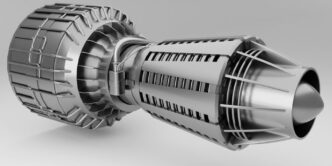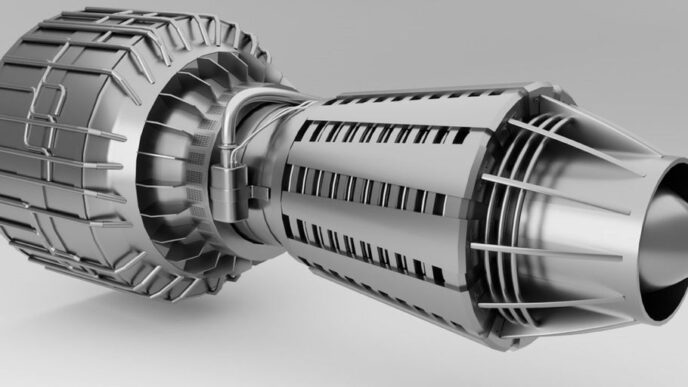Are you tired of getting stuck in never-ending traffic jams? Do you dream of a future where cars can communicate and work together to create seamless traffic flow? Well, get ready because we’re about to explore the exciting world of V2V (Vehicle-to-Vehicle) technology and its incredible potential for enhancing traffic flow. In this blog post, we will delve into the concept of V2V communication and its impact on revolutionizing transportation. Buckle up and prepare to unlock the power of cars communicating!
Introduction to V2V Communication:
V2V (Vehicle-to-Vehicle) communication is an innovative technology that enables cars to communicate with each other and with roadside infrastructure. This communication facilitates the exchange of valuable information about road conditions, traffic congestion, and accidents. V2V technology has the potential to greatly improve traffic flow and safety on our roads.
To understand the potential of V2V communication, it’s important to grasp how it works. V2V communication relies on a dedicated short-range communications (DSRC) system. DSRC utilizes wireless technology and radio waves for communication between vehicles and infrastructure. Equipped with transceivers, DSRC-enabled vehicles transmit and receive data.
The data transmitted by DSRC-equipped vehicles includes information about the vehicle’s location, speed, and heading. Other vehicles can utilize this information to avoid collisions and enhance traffic flow. Vehicles need to be equipped with onboard computers capable of processing the data and making decisions based on it to effectively utilize this information.
V2V technology offers various ways to improve traffic flow. It can provide real-time information about traffic conditions, including congestion, accidents, and road closures. By sharing this information, V2V-enabled cars can help drivers avoid these obstacles and offer route guidance to reach destinations quickly and efficiently.
Benefits of V2V Communication:
V2V communication brings several benefits that enhance traffic flow and reduce congestion on our roads. By enabling cars to communicate with each other, we can better monitor and manage traffic, making it more efficient and less prone to disruptions.
Some of the benefits of V2V communication include:
1. Improved traffic management:
V2V communication helps Traffic Control Centers (TCCs) manage traffic more effectively. Real-time data received from cars on the road allows TCCs to adjust signal timing and routing for optimized traffic flow. This results in shorter travel times and fewer disruptions for motorists.
2. Reduced congestion:
V2V technology enhances our understanding of when and where congestion occurs. Real-time data analysis helps make adjustments to alleviate congestion, such as rerouting traffic or providing real-time information on alternative routes.
3. Improved safety:
V2V communication provides drivers with real-time information about hazards ahead, including accidents, road closures, or adverse weather conditions. With this information, drivers can make informed decisions about how to safely navigate their routes.
Technical Aspects of V2V:
V2V technology has the potential to significantly improve traffic flow and safety on our roads. By enabling cars to communicate with each other, V2V provides real-time information about traffic conditions, congestion, accidents, and more. This information helps drivers make better decisions regarding route selection and speed, reducing traffic congestion and improving safety.
Several technical aspects are important to understand for the full realization of V2V’s potential. First, V2V relies on short-range communications between vehicles. This means that vehicles must be within a certain range of each other to exchange information. Second, V2V uses Dedicated Short-Range Communications (DSRC), a wireless communication specifically designed for vehicular use. DSRC transmits large amounts of data quickly and reliably over short distances. Lastly, V2
V utilizes GPS data to determine the location of nearby vehicles. By combining these technical components, V2V provides accurate and up-to-date information about traffic conditions.
Challenges and Potential Solutions:
The widespread adoption of V2V technology faces several challenges that need to be addressed for its full potential to be realized.
One challenge is the lack of a standard for V2V technology. Different manufacturers use different systems that are not compatible with each other, hindering effective communication between cars and limiting the potential of V2V technology.
Another challenge is the cost of installing V2V equipment in vehicles. Currently, the high cost acts as a barrier to widespread adoption among car owners.
Privacy and security concerns are also associated with V2V technology. People worry about their personal information being compromised if this technology falls into the wrong hands.
Despite these challenges, potential solutions exist. For instance, introducing legislation that mandates all new cars to be fitted with V2V equipment would create a standard for the technology and make it more affordable for consumers. Additionally, funding from governments or private companies could subsidize the cost of installing V2V equipment in vehicles.
Addressing privacy and security concerns can involve strict controls on data access and usage policies for V2V systems.
Case Studies on V2V Adoption:
The average American driver spends approximately 290 hours behind the wheel each year. That’s a significant amount of time wasted in traffic, but what if your car could communicate with others on the road? What if it could warn you of an upcoming accident or notify you that the lane you’re trying to merge into is already occupied?
This is the vision behind Vehicle-to-Vehicle (V2V) technology, enabling cars to communicate with each other and the surrounding infrastructure. V2V has the potential to improve traffic flow, reduce accidents, and make commutes shorter and safer.
To bring V2V’s full potential to life, more cars need to be equipped with the technology. That’s where case studies come in. By understanding the experiences of early adopters, we can identify strategies to increase V2V adoption and bring this transformative technology to more drivers.
Privacy and Security Concerns with V2V Technology:
Given the growing concerns over data privacy and security, it’s natural for V2V technology to face suspicion. After all, this technology relies on constant communication between vehicles, sharing data about their location, speed, and direction. These factors raise concerns about personal information being compromised.
However, it’s important to note that V2V technology does not collect or store personal data. All information exchanged between vehicles is anonymous and encrypted, preventing tracking or spying on individual drivers. The system is designed to ensure that even if one vehicle is hacked, the rest of the network remains secure.
Privacy and security concerns are understandable when it comes to new technologies like V2V. However, it’s crucial to recognize that V2V systems are designed with safety and security in mind. When used correctly, V2V can be an invaluable tool for improving traffic flow and making our roads safer for everyone.
Conclusion:
V2V technology holds great promise for revolutionizing our driving experience and interactions with vehicles. Its potential to reduce traffic congestion, improve safety, and provide convenience through real-time traffic information is substantial. As V2V technology continues to develop, it will be exciting to witness its further enhancements in the years to come.”













